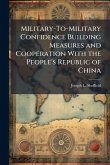China is experiencing extremely rapid changes in every element of its national power--economic, political, and military. Its economy is booming, producing double-digit gains each year since the mid-1980's. This explosive growth raises the prospect of China emerging as a major global power. To help protect this potential new status, Beijing decided to modernize its military to "gain respect" in the world community and become militarily competitive with other global powers. This resulted in a nation possessing one of the fastest growing economies in the world combined with one of the largest military machines -- that is slowly gaining an offensive force-projection capability. These factors may upset the balance of power in the Asian region, in addition to posing a threat to U.S. interests. This paper examines the implications for U.S. and regional security posed by the economic reforms and the military modernization taking place in China, focusing on Chinese acquisition and indigenous production of high-technology weapons to produce an offensive force-projection capability. After surveying the lack of resources available to the Chinese defense industries, it analyzes China's military equipment modernization program and impediments to that program. This work has been selected by scholars as being culturally important, and is part of the knowledge base of civilization as we know it. This work was reproduced from the original artifact, and remains as true to the original work as possible. Therefore, you will see the original copyright references, library stamps (as most of these works have been housed in our most important libraries around the world), and other notations in the work. This work is in the public domain in the United States of America, and possibly other nations. Within the United States, you may freely copy and distribute this work, as no entity (individual or corporate) has a copyright on the body of the work. As a reproduction of a historical artifact, this work may contain missing or blurred pages, poor pictures, errant marks, etc. Scholars believe, and we concur, that this work is important enough to be preserved, reproduced, and made generally available to the public. We appreciate your support of the preservation process, and thank you for being an important part of keeping this knowledge alive and relevant.
Bitte wählen Sie Ihr Anliegen aus.
Rechnungen
Retourenschein anfordern
Bestellstatus
Storno







![The People's Almanac [microform]: a Compilation of Facts and Figures for the Consideration of the Electors of Canada The People's Almanac [microform]: a Compilation of Facts and Figures for the Consideration of the Electors of Canada](https://bilder.buecher.de/produkte/66/66187/66187288m.jpg)
